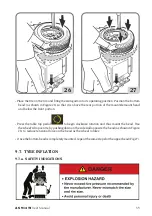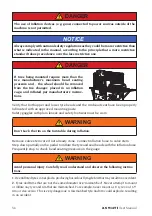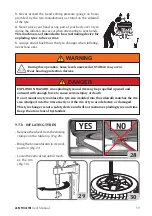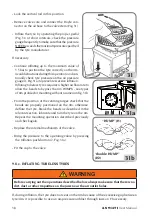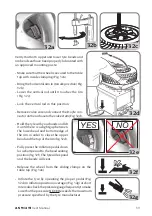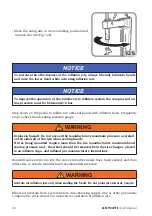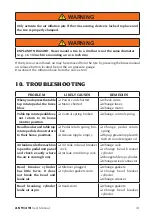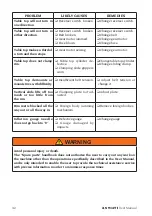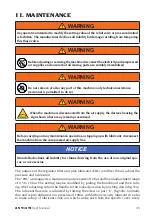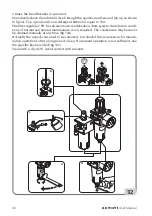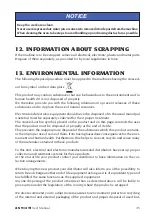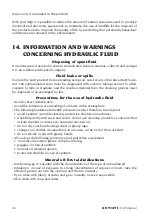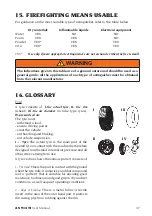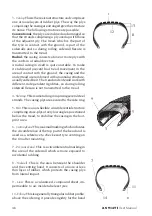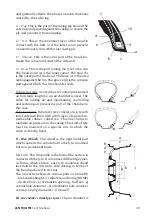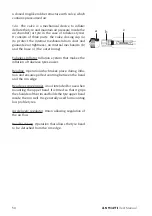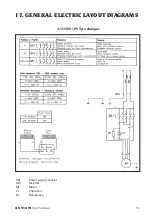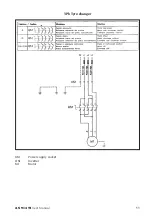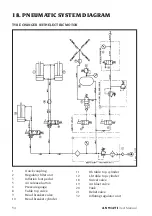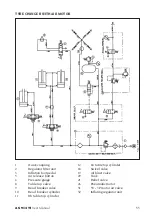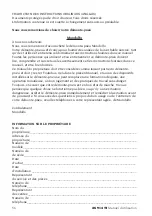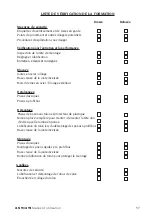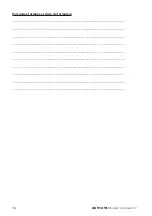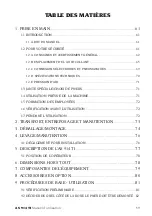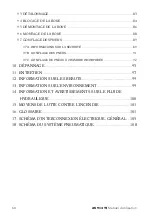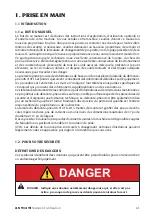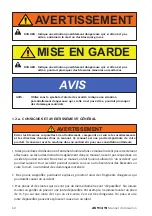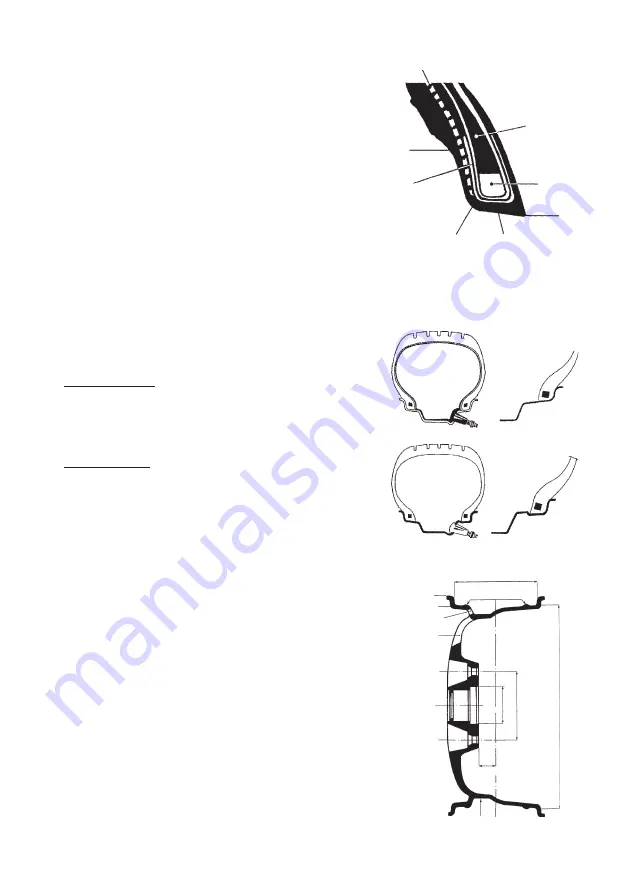
AS 914 TI
User Manual
49
2
10
4
a
c
d
e
b
and gradually offsets the abrupt uneven thickness
caused by the side ring.
11 - Flap
. This is the part of the casing ply around the
side ring and placed against the casing, to secure the
ply and prevent it from slipping.
12 - Foot
. This is the innermost layer of the tread in
contact with the belt, or if the latter is not present
(conventional tyre) with the last casing ply.
13 - Shoulder.
This is the outer part of the tread, be-
tween the corner and start of the sidewall.
14 - Bead
. This is the part joining the tyre to the rim.
The bead point (a) is the inner corner. The spur (b)
is the outer part of the bead. The base (c) is the area
resting against the rim. The groove (d) is the concave
part against which the rim shoulder rests.
Tube type tyres. As a tyre has to contain pressurised
air for a fairly long time, an air chamber is used. The
valve for adding air and maintaining, controlling
and restoring air pressure is part of the chamber in
this case.
Tubeless tyres. Tubeless tyres consist of a tyre with
inner sidewall lined with a thin layer of special im-
permeable rubber, called
liner
. This liner helps to
maintain air pressure in the casing. This kind of tyre
must be mounted on a specific rim, to which the
valve is directly fixed.
II - Rim (Wheel).
The wheel is the rigid metal part
which connects the vehicle hub to the tyre, on a fixed
but non-permanent basis.
Rim profile.
The rim profile is the form of the section in
contact with the tyre. It comprises different geomet-
ric forms, which ensure: easy tyre mounting (bead
insertion in the rim well); safe driving, in terms of
the bead anchored in its seat.
The rim section shows its various parts: a) rim width
– b) shoulder height – c) tubeless anchoring (HUMP)
– d) valve hole – e) ventilation opening – f) off set – g)
central hole diameter – h) attachment hole centre to
centre i) keying diameter – j) rim well.
III - Air chamber (tube type tyres).
The air chamber is
f
g h
i
a
c
b
d
e
j

